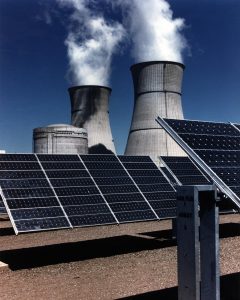Best Strategies for Environmentally-Friendly Manufacturing
Guest article by Heather Redding
Modern society has placed a priority upon consumerism. Yet in many places, industrial production contributes significantly to unwelcome pollution. Manufacturers today strive to balance achieving production targets with the need to reduce harmful ecosystem impacts.
Many firms have developed innovative ways to address this issue. Some companies have reduced the use of toxic solvents by finding suitable substitutes or eliminating specific products. Others have invested in plant modifications to reduce resource waste and enhance energy efficiency.
Implementing best practices for reaching sustainable manufacturing goals has resulted in extensive energy savings, for instance. This brief article will attempt to offer some useful suggestions for promoting more environmentally friendly manufacturing.
1. Obtain More Efficient Energy Consumption
Today, chemical manufacturers, metal products fabricators, tobacco plants, and food and beverage production facilities all utilize energy resources extensively.
Industrial applications depend heavily upon the use of electric motors with up to 70% of daily power expenditures supporting this function. The goal of reducing energy consumption remains a linchpin for achieving more sustainable manufacturing processes.
A complex chain of events surrounds power utilization: it carries broad environmental implications. For example, today the vast majority of the Earth’s power plants still rely on unclean fossil fuels.
The burning of gas, coal or oil generates energy but also releases harmful substances into the atmosphere. Every reduction in the release of toxic fumes proves beneficial for the global ecosystem. Poor air quality promotes global warming. It also contributes to numerous health problems. Noxious emissions inevitably exert profound impacts upon the environment.
In order to achieve more efficient energy consumption, e.g. through the use of more energy-efficient motors in industrial processes, it remains vital to track the utilization of energy within a production facility.
An Energy Audit offers a powerful tool for identifying areas of potential power savings. For instance, even replacing overhead lights with energy-efficient products reduces energy consumption and mercury pollution risks significantly in some cases.
The need to reduce wasteful energy practices that contribute to Global Warming has become a particularly urgent concern today. By implementing sustainable energy systems, manufacturing facilities may offer valuable contributions towards attaining this policy goal. Solar power, geothermal power, and wind power may provide sources of readily available, renewable energy.
For instance, some manufacturers have used biomass fuels to reduce their facilities’ energy consumption expenditures significantly.
By adopting sustainable practices, production plants can tap into renewable energy sources offering greater long-term savings. Harnessing multiple renewable energy sources provides a practical way to implement cost-effective alternatives in some venues.
3. Plan Ahead Today highly successful manufacturing companies frequently also embrace the use of more environmentally friendly practices through careful long-term planning. Technological innovations, such as the Internet of Things, artificial intelligence, virtual reality devices, and 3D printing frequently provide opportunities for deploying greener manufacturing processes.
For example, the adoption of computer-assisted drafting in the metals fabrication industry in combination with automation has enabled some manufacturing facilities to utilize sheet metal and other product constituents more efficiently. These technologies help reduce the tonnage of waste sent to landfills.
Similarly, advancements in steel case hardening technologies have permitted some facilities to generate finished industrial products without the use of large quantities of toxic chemicals.
Planning ahead for the adoption of greener technology assist many enterprises in reducing their environmental footprint.
For instance, consider the potential benefits of 3D printing techniques. Unlike CNC machining in production environments, its use typically involves an additive process in which manufacturers utilize only constituents destined for a final product. The spread of 3-D printing potentially enhances production efficiency.
4. Choose Recycled Materials  Relying more extensively upon recycling also enhances greener production. Some natural resources exist in limited quantities and conserving them benefits future generations.
Relying more extensively upon recycling also enhances greener production. Some natural resources exist in limited quantities and conserving them benefits future generations.
Choosing recyclable processes promotes the long-term availability of many raw materials.For instance, it makes sense to research the recycling potential of materials used in a manufacturing facility.
Many items, such as paper or cardboard packaging, readily permit recycling. Production facilities may even develop additional sources of revenue by promoting this Lean Management strategy.
Towards a Sustainable Future
By adopting practical strategies for more environmentally friendly manufacturing, companies help promote a sustainable future.
Find ways to obtain more efficient energy consumption. Utilize renewable energy whenever possible. Plan ahead to take full advantage of clean technologies and choose to recycle. Employing these practical money-saving tools can assist your enterprise in promoting environmental responsibility effectively today.
Heather Redding is a tech enthusiast and freelance writer based in Aurora, Illinois. She is a coffee-addict who enjoys swimming and reading. Street photography is her newly discovered artistic outlet and she likes to capture life’s little moments with her camera. You can reach Heather via Twitter.




